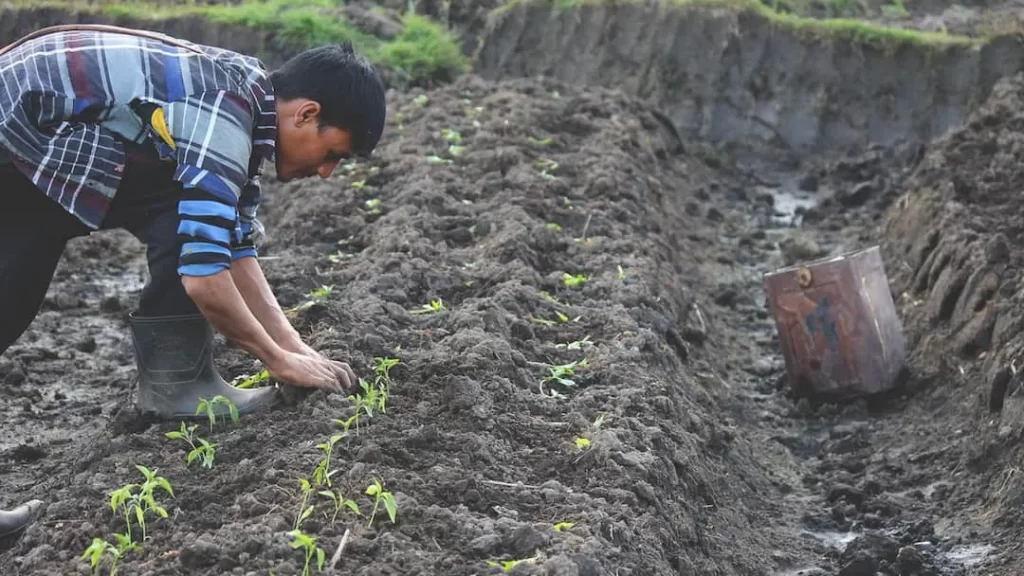
Organic farming and conventional farming represent two distinct approaches to agricultural production. Each with its own set of practices, philosophies, and impacts on the environment, human health, and food systems. In this blog post, we will examine the benefits and drawbacks of organic farming compared to conventional methods. And highlighting the implications for sustainability, biodiversity, soil health, and food security.
Benefits of Organic Farming:
- Environmental Sustainability: Organic farming prioritizes environmental sustainability by minimizing the use of synthetic pesticides, fertilizers, and genetically modified organisms (GMOs). By relying on natural and organic inputs such as compost, manure, and cover crops, organic farmers reduce chemical pollution, protect biodiversity, and promote ecosystem health.
- Soil Health: Organic farming practices such as crop rotation, cover cropping, and organic amendments enhance soil health and fertility. By fostering soil biodiversity, improving soil structure, and increasing organic matter content. The organic farmers build resilient soils capable of retaining moisture, supporting nutrient cycling, and mitigating erosion.
- Biodiversity Conservation: Organic farming promotes biodiversity conservation by creating habitat diversity, preserving native vegetation, and avoiding the use of chemical pesticides and herbicides that harm beneficial insects, birds, and pollinators. By fostering diverse agroecosystems, organic farmers support natural pest control mechanisms and enhance ecosystem resilience.
- Reduced Chemical Inputs: Organic farming reduces reliance on synthetic chemicals such as pesticides and fertilizers. They are minimizing chemical residues in food, soil, and water. By avoiding synthetic pesticides and herbicides, organic farmers protect human health. They reduce pesticide exposure risks for farmworkers, and contribute to safer food production systems.
- Improved Food Quality: Organic farming practices prioritize the production of high-quality, nutritious food by avoiding synthetic additives, preservatives, and genetically modified ingredients. Organic foods are often perceived as fresher, tastier, and healthier. Due to their higher nutritional content and absence of chemical residues.
Drawbacks of Organic Farming:
- Lower Yields: Organic farming often yields lower crop yields compared to conventional methods primarily due to limitations in nutrient availability and pest control. Organic farmers may experience reduced productivity and higher production costs, leading to lower profitability and economic viability.
- Higher Labor Intensity: Organic farming requires more labor-intensive practices such as manual weed control, crop rotation, and organic soil amendments, increasing labor costs and farm management complexity. Organic farmers may face challenges in finding skilled labor and managing labor-intensive tasks, particularly on larger-scale operations.
- Risk of Pest and Disease Damage: Organic farming relies on natural pest control mechanisms and biological control agents, which may be less effective in managing pest and disease outbreaks compared to synthetic pesticides used in conventional farming. Organic farmers may experience higher crop losses and reduced resilience to pest and disease pressures, particularly in monoculture systems.
- Limited Availability and Accessibility: Organic food products are often priced higher than conventionally produced foods. Making them less accessible to low-income consumers. Limited availability of organic food products in some regions may also pose challenges. For consumers seeking to purchase organic foods, particularly in rural areas or food deserts.
- Certification and Compliance Requirements: Natural Farming requires compliance with stringent certification standards and regulations, which may be time-consuming and costly for farmers to achieve and maintain. Organic certification processes involve documentation, record-keeping, and periodic inspections to verify compliance with organic standards, adding administrative burdens for farmers.
Conclusion:
In conclusion, organic farming and conventional farming represent two distinct approaches to agricultural production. Each with its own set of benefits and drawbacks. This Natural Farmig prioritizes environmental sustainability, soil health, biodiversity conservation, reduced chemical inputs. And improved food quality, but may face challenges such as lower yields, higher labor intensity, risk of pest and disease damage, limited availability, and certification requirements. Conventional farming, on the other hand, emphasizes higher yields, lower production costs, and greater accessibility but may contribute to environmental degradation, soil erosion, water pollution, and pesticide residues. Ultimately, the choice between organic farming and conventional methods depends on farmers’ preferences. Market demand, environmental considerations, and sustainability goals, highlighting the need for diversified and adaptive agricultural systems. That address the complex challenges of food production in a changing world.